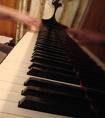 Last Friday, over lunch with a friend, the discussion turned to ways to make classical music relevant to younger audiences. This hoary topic tends to make conversation spiral around in circles. But I feel that there’s enough happening in the field these days to suggest that composers and musicians are doing what they can to reach out to younger audiences. This great article in the Financial Times by Laura Battle explores the topic in some depth. But in general, arts institutions have been slower to catch on.
Last Friday, over lunch with a friend, the discussion turned to ways to make classical music relevant to younger audiences. This hoary topic tends to make conversation spiral around in circles. But I feel that there’s enough happening in the field these days to suggest that composers and musicians are doing what they can to reach out to younger audiences. This great article in the Financial Times by Laura Battle explores the topic in some depth. But in general, arts institutions have been slower to catch on.
Here in San Francisco, there is a modicum of institutional buy-in to the idea that classical music can break free of stuffy concert halls and stiff concert etiquette. The San Francisco Symphony runs its After Hours events in the second tier lobby at Davies Symphony Hall. These are popular with a younger crowd. Museums are starting to get the hang of creating a more free and easy atmosphere for audiences to hear music – yesterday’s blog post about Friday night’s L@TE event at the Berkeley Art Museum provides an example of how institutions are collaborating with musicians to bring new audiences to contemporary classical music.
I would like to see more actual presenters of classical music events range beyond their habits and try new things. Why shouldn’t San Francisco performances, Old First Concerts or Stanford Lively Arts produce cool, adjunct events to accompany their main stage concerts at the usual auditoriums? Logistics notwithstanding, there must be a way to create buzz around all these great artists playing in town by having them perform a low-key, short set perhaps with collaborators from other musical genres like jazz and electronica, dancers or visual artists, in a club or other convivial spot prior to the mainstage concert.
Come on, classical music presenters: let’s get creative.

 Thoughts about some stuff I did at the weekend:
Thoughts about some stuff I did at the weekend: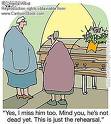 I know rehearsal periods for theatrical productions are tight in this country. Artists manage to pull of incredible feats i four weeks through sheer hard work, talent and caffeine. But I’m getting a little tired of theater companies using preview performances as dress rehearsals.
I know rehearsal periods for theatrical productions are tight in this country. Artists manage to pull of incredible feats i four weeks through sheer hard work, talent and caffeine. But I’m getting a little tired of theater companies using preview performances as dress rehearsals. One of the most frustrating things about hosting a radio show which airs from 10 – 11 pm on a Friday night is that you get a lot of disgruntled would-be listeners writing to you to let you know that they’d love to tune in — if only the show weren’t happening at such an awkward time during the week. I’ve been getting several requests a week from people asking about whether it’s possible to hear the show after the fact
One of the most frustrating things about hosting a radio show which airs from 10 – 11 pm on a Friday night is that you get a lot of disgruntled would-be listeners writing to you to let you know that they’d love to tune in — if only the show weren’t happening at such an awkward time during the week. I’ve been getting several requests a week from people asking about whether it’s possible to hear the show after the fact I asked the the superb, young Macedonian pianist Simon Trpceski jotted down some thoughts for lies like truth about his world. Mr. Trpceski kindly indulged me with the following…
I asked the the superb, young Macedonian pianist Simon Trpceski jotted down some thoughts for lies like truth about his world. Mr. Trpceski kindly indulged me with the following…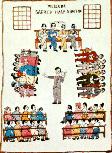 I have a friend who’s nuts about shape note singing. For anyone unfamiliar with this powerful yet not widely known and often misunderstood form of music, you can find out all about it
I have a friend who’s nuts about shape note singing. For anyone unfamiliar with this powerful yet not widely known and often misunderstood form of music, you can find out all about it  I finally got around to viewing the performance of Eric Whitacre’s “Lux Aurumque,” a work which the composer created for his Virtual Choir, a sort of hybrid between a live performance by a choir standing together in one room and one involving people singing from many different locales via Internet hookup.
I finally got around to viewing the performance of Eric Whitacre’s “Lux Aurumque,” a work which the composer created for his Virtual Choir, a sort of hybrid between a live performance by a choir standing together in one room and one involving people singing from many different locales via Internet hookup.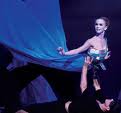 Last week, while preparing to write my weekly column for the
Last week, while preparing to write my weekly column for the 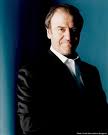 Everyone knows the Russians can teach the U.S. a thing or two about playing the music of Rachmaninoff, Borodin, Mussorgsky, Shostakovitch and co. That’s why audiences in this country flock in droves to hear groups like the Mariinsky Orchestra led by Valery Gergiev (pictured). At
Everyone knows the Russians can teach the U.S. a thing or two about playing the music of Rachmaninoff, Borodin, Mussorgsky, Shostakovitch and co. That’s why audiences in this country flock in droves to hear groups like the Mariinsky Orchestra led by Valery Gergiev (pictured). At 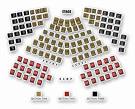 One of the many challenges facing performing arts presenters is figuring out seating plans. With audiences for some artforms such as dance typically booking up to see performances very late — sometimes on the day of performance — trying to work out how much to charge for tickets and how best to fill up premium seats is no easy matter for producers. Mathematicians could spend years working out algorithms to help arts organizations predict how to manage their houses and still the problem wouldn’t be solved.
One of the many challenges facing performing arts presenters is figuring out seating plans. With audiences for some artforms such as dance typically booking up to see performances very late — sometimes on the day of performance — trying to work out how much to charge for tickets and how best to fill up premium seats is no easy matter for producers. Mathematicians could spend years working out algorithms to help arts organizations predict how to manage their houses and still the problem wouldn’t be solved.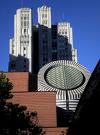 I dropped in on the
I dropped in on the